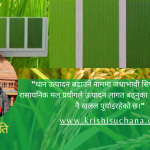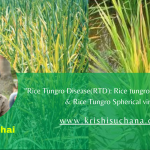Quality seeds for food security

Increase in population and decrease in food supply can be a big trouble for Nepal along with the fact that non-agricultural land uses are increasing and natural resources are shrinking and degrading rapidly. Hence, there is an urgent need to increase productivity and quality in all these crops and devise mechanisms to make it available to all to have both food and nutritional security. This can only be possible by optimizing the yield and quality through improved production technologies and integration of natural resources for producing healthy food. Use of quality seed is the most important production factor. Quality seeds can be defined as varietally pure with high germination percentage, free from diseases and disease organisms, with proper moisture and weight ensuring good germination, rapid emergence, and vigorous growth.
There are four basic parameters to seed quality attributes:
- Physical qualities of the seed in the specific seed lot
- Physiological qualities which refer to aspects of performance of the seed
- Genetic quality which relates to specific genetic characteristics of seed variety
- Seed Health which refers to the presence of diseases and pests within a seed
Nepal is facing similar problems as many developing countries regarding its agricultural development: low agricultural productivity, lack of easy access to inputs, low mechanization, old agricultural technologies, high rates of economic migration of men (and thus feminisation of agricultural production) and an inadequate enabling policy environment are some of the major constraints to agricultural production. Further, low uptake of improved plant varieties and low access and availability of improved and quality seed limit improvements in crop production. These factors, the increasing population as well as the high sensitivity to climate risks largely contribute to Nepal’s position as one of the most food-insecure countries in Asia and one of the poorest countries in the world (IFPRI 2012; Krishnamurthy et al. 2013).
Quality seeds ensures good crop stand because of its high genetic and physiological qualities. So with the institutional and technological enhancements in seed sectors, quality seeds can be used as solution for food security with addition to food self-sufficiency. Seed security is a prerequisite for food security of small-holder farmers. In the case of Nepal, the timely and sufficient supply of quality seed of high yielding varieties has the potential to increase crop yields by about 15-25% (Gauchan et al. 2014). Despite numerous efforts to improve the seed systems in Nepal, the country is still facing many challenges in its seed sector development. Rice is the most important staple crop and finger millet is the fourth most important food crop in terms of area coverage in the country. Despite being considered a neglected and underutilised species, finger millet is particularly important in subsistence-based farming systems in the middle mountains of Nepal due its nutritional value and suitability for growing on dry soils with low fertility (Bhandari et al. 2004).
Writer: Harikala Paudel (Student, IAAS, Paklihawa, Rupandehi)

 दिल्लीको होटलमा बसेर क्यानडा र अमेरिकामा मानव तस्करी
दिल्लीको होटलमा बसेर क्यानडा र अमेरिकामा मानव तस्करी  अनलाइन जुवा खेलाएर काभ्रेका अनिलले गरे दुई अर्बको कारोबार
अनलाइन जुवा खेलाएर काभ्रेका अनिलले गरे दुई अर्बको कारोबार  मुख्यमन्त्री सोडारीले विश्वासको मत लिन सुदूरपश्चिमको प्रदेश सभा बैठक आव्हान
मुख्यमन्त्री सोडारीले विश्वासको मत लिन सुदूरपश्चिमको प्रदेश सभा बैठक आव्हान  अफगानिस्तानमा बाढीबाट ३१५ भन्दा बढीको मृत्यु
अफगानिस्तानमा बाढीबाट ३१५ भन्दा बढीको मृत्यु  सुँगुरको मिर्गौला प्रत्यारोपण गरिएका रिचर्डको निधन
सुँगुरको मिर्गौला प्रत्यारोपण गरिएका रिचर्डको निधन 


